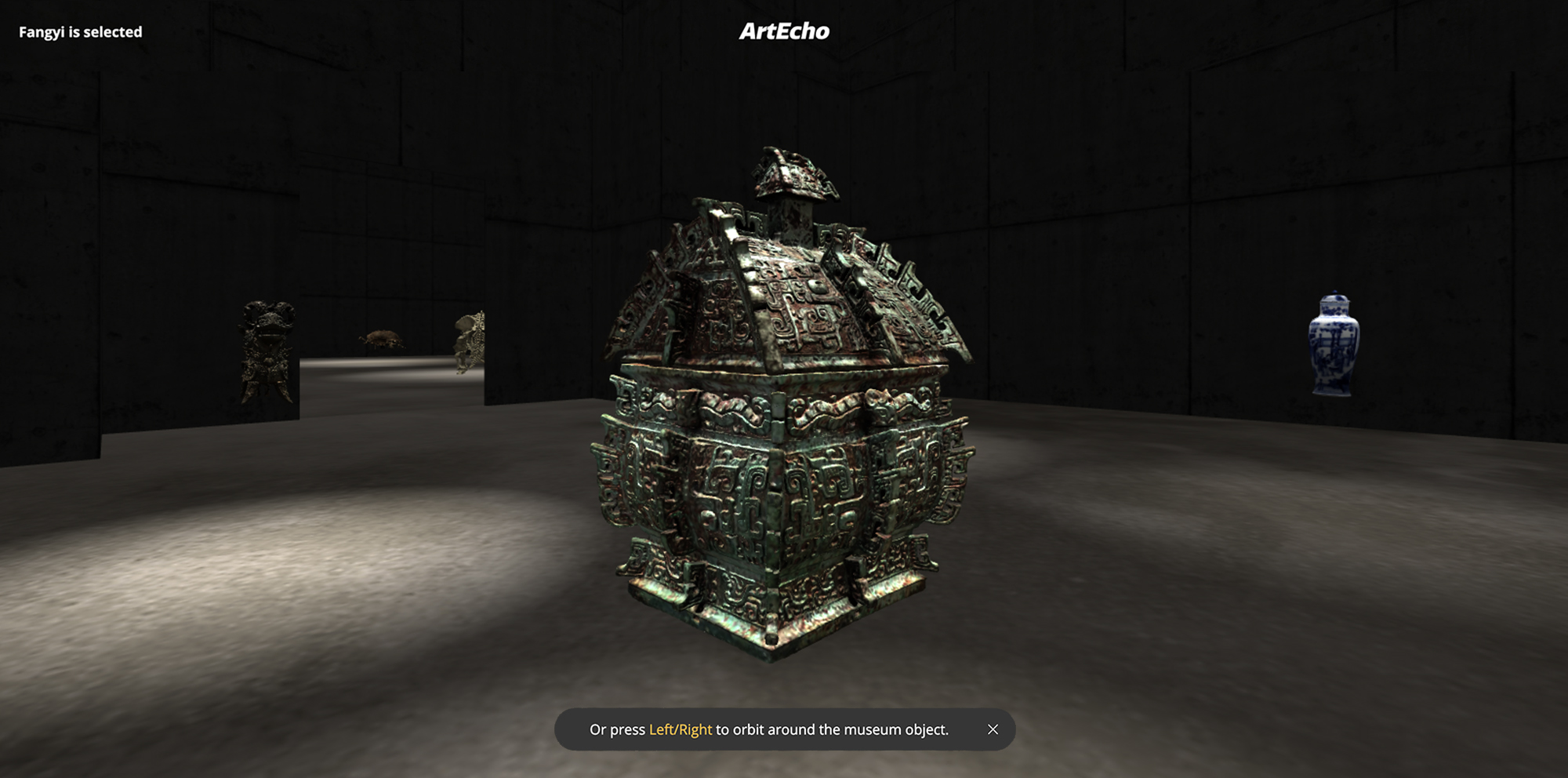
Parsons Design and Technology Alumni Win the 2021 Smithsonian Open Access Challenge
For most people, entering a museum and viewing the works on display doesn’t present any challenges, but for the blind and visually impaired, there are few, if any, options that allow them to experience the paintings, photographs, sculptures, and more that fill a museum.
Recently, the Smithsonian Museum created an Open Access Challenge that will allow users to explore online museum collections by using 2D and 3D digitized assets from the Smithsonian’s Open Access collections. Seven teams were commissioned by Cooper Hewitt’s Interaction Lab to develop new digital interactions and innovative tools that enable play and discovery with the vast dataset, thanks to the support of Verizon 5G Labs.
One of the winning projects, ArtEcho, was created by a group of Parsons Design and Technology alumni, including Zhizhen (Jerry) Tan, MFA DT’ 21 who also served as Project Lead, Lan Zhang, MFA DT ‘20, Eraince Wang, MFA DT ‘20, and Benny Zhang, MFA DT ‘21. The group also worked with John Roach, Associate Professor of Fine Arts, and Thomas Tajo, a blind research, echolocation instructor, and President of Vision Inclusive.
Tan was inspired to create ArtEcho in part because as a designer who’s visual-based, he’s afraid of losing his sight, and has worked with the blind and visually impaired communities since his second year in the MFA DT program. The project was also inspired by Tajo, the blind echolocation instructor who served as a team member, and who has been teaching echolocation, a method used by some blind people to navigate and perceive objects, for more than eight years.
“I was inspired to create audio-based digital experiences primarily for sightless audiences’ direct perception, and the Smithsonian challenge gave me a chance to interpret how a digital museum experience might enable people to interact with objects beyond just sight,” explains Tan. “ArtEcho is a web-based virtual reality museum that allows you to perceive museum objects from Smithsonian 3D digitization library and their stories through imagery, sound, verbal narration, and simulated echolocation based on the teachings of Thomas Tajo.”
Tan is hopeful that programs like ArtEcho will provide broader access for echolocation users to perceive the Smithsonian, and other museums’, 3D objects directly through sounds. Tan’s fellow project members agree, emphasizing that the mission of the challenge is meaningful for people from various industries, as the projects touch on all aspects of daily life.
“As a developer and designer, I always seek opportunities to inspire enlightenment and this competition on activating open access provides me a great space to further explore it,” shared Eraince Wang. “Also, I’m attracted by the idea of creating a virtual experience that can include everyone, where I spend more time on learning and practicing on web accessibility development.”
“With accessible and open data and resources that are well categorized and organized by institutions, it really benefits creative and academic individuals to learn, explore, and experiment on their own, which unlocks new possibilities,” explains Lan Zhang. “I personally always look for open-sourced materials to work with when it comes to my creative practice.”
Professor John Roach echoes the alumni he worked with, noting: “In my teaching I like to emphasize the impact that all of our senses have on our experience, so it was great to work on ArtEcho which prioritizes listening. It’s a remarkable tool for blind visitors to engage with objects from the Smithsonian, but it is also a great way for sighted users to learn about echolocation, to activate their sense of hearing and to consider the importance of accessibility.”
All of the Parsons alumni who worked on the project highlighted that their time in the MFA DT program, and at Parsons in general, helped influence their design work, and how they view the role of a designer in the world today. The Parsons curriculum trains designers to break down barriers and constantly innovate in order to create a more just, equitable society, which are principles and values that underscore ArtEcho as well.
“My time at Parsons taught me to embrace wearing multiple hats,” shares Lan Zhang.
“We were encouraged to excel at things we were passionate about and were constantly challenged to innovate and push the boundaries. As part designer and part developer, I enjoy experimenting and taking up projects that aren’t traditionally defined by my role. It makes me always look forward to my next creative excursion. I also love collaborating with my fellow DT friends because we share a very similar mindset.”